Removing concrete countertops can be a challenging and labor-intensive process, but with the right approach and tools, it can be done effectively. Concrete countertops are prized for their durability and customizability, but they are also heavy and often securely installed, making their removal a significant undertaking. Whether you are replacing the countertops with a new material or simply renovating your kitchen, understanding the steps involved in removing concrete countertops is crucial.
The first step in removing concrete countertops is preparing the area. This involves clearing the countertops of all items and protecting surrounding surfaces to prevent damage. Covering the floor and adjacent cabinetry with drop cloths or plastic sheeting can help keep dust and debris contained. Additionally, it’s essential to ensure proper ventilation, as the removal process can generate a significant amount of dust.
Before beginning the removal, it’s necessary to disconnect any plumbing or electrical fixtures connected to the countertops. This includes turning off the water supply and disconnecting the sink, faucet, and any built-in appliances. It’s crucial to take these steps to avoid any potential water damage or electrical hazards during the demolition process.
Once the area is prepped and fixtures are disconnected, the next step is to assess how the countertops are secured. Concrete countertops are typically attached to the base cabinets with either adhesive, screws, or a combination of both. Identifying the attachment points will help determine the best removal method. In some cases, countertops might also be reinforced with rebar or mesh, adding to the complexity of the removal process.

To begin the physical removal, it’s often necessary to cut through the caulk or adhesive that seals the countertop to the walls and cabinets. A utility knife or a specialized caulk removal tool can be used to carefully cut through these materials. This step is crucial to prevent unnecessary damage to the surrounding structures and make the removal process smoother.
Next, the actual demolition of the concrete countertops can begin. Using a sledgehammer or a hammer and chisel, start breaking the concrete into manageable pieces. It’s essential to work slowly and methodically to avoid excessive force that could damage the base cabinets or nearby walls. Wearing protective gear, such as safety goggles, gloves, and a dust mask, is highly recommended to protect against flying debris and dust inhalation.
For countertops that are bolted to the cabinets, it’s necessary to locate and remove the screws or bolts before attempting to lift the concrete slabs. A power drill or screwdriver can be used for this task. If the countertops are heavily secured with screws and adhesive, it might be easier to break the concrete into smaller pieces first and then remove the fasteners.
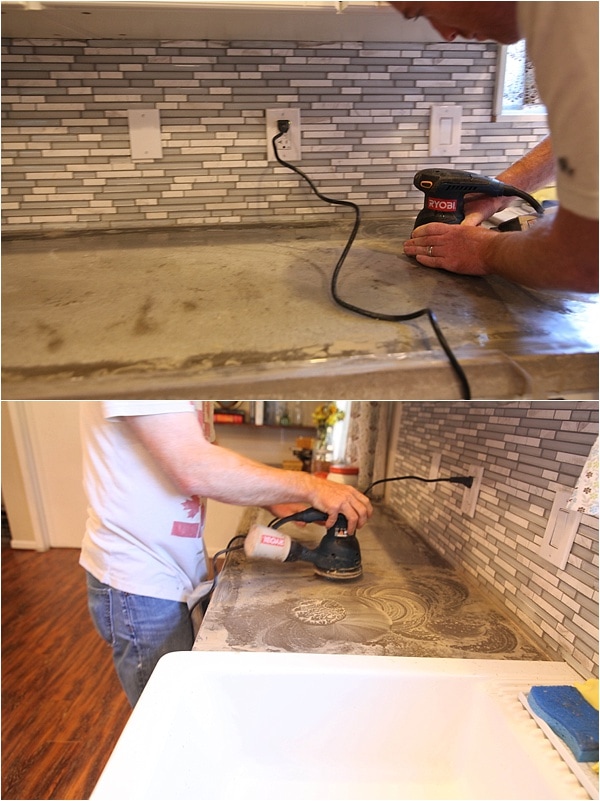
Once the concrete is broken into smaller pieces, it can be removed from the kitchen. This step often requires assistance due to the weight of the material. It’s important to lift with your legs and not your back to prevent injury. Using a wheelbarrow or dolly can help transport the debris to a disposal area or dumpster.
After the concrete countertops are removed, the next step is to clean up the area. This includes vacuuming up any dust and debris, removing protective coverings, and inspecting the base cabinets for any damage that might have occurred during the demolition. Any necessary repairs to the cabinets or walls should be addressed before installing new countertops.
In some cases, homeowners might encounter challenges such as countertops reinforced with rebar or mesh. Removing these can be more complex and might require the use of power tools like an angle grinder to cut through the metal reinforcement. It’s important to handle these tools with care and follow all safety guidelines to prevent accidents.
Another potential challenge is dealing with countertops that were poured in place. These are typically more difficult to remove because they are custom-fit to the kitchen and often include integrated features like sinks or backsplashes. Removing poured-in-place countertops might require more extensive demolition and potentially professional assistance.

Disposing of the concrete debris is an important consideration. Concrete is heavy and not all waste disposal services accept it. Renting a dumpster specifically for construction debris or finding a local recycling facility that accepts concrete can be necessary steps. Recycling the concrete, when possible, is an environmentally friendly option.
Throughout the removal process, it’s crucial to work carefully to avoid damaging the underlying cabinets and other kitchen structures. Repairing or replacing damaged cabinets can add significant cost and time to your renovation project. Taking your time and using the right tools can help prevent unnecessary damage.
If the removal process seems too daunting, hiring a professional can be a wise choice. Professionals have the experience, tools, and manpower to remove concrete countertops efficiently and safely. While this option is more expensive, it can save time and reduce the risk of damage to your kitchen.
Finally, once the old countertops are removed and the area is cleaned and prepped, you can begin the installation of new countertops. Whether you choose granite, quartz, laminate, or another material, following the proper installation guidelines will ensure a beautiful and functional kitchen space.
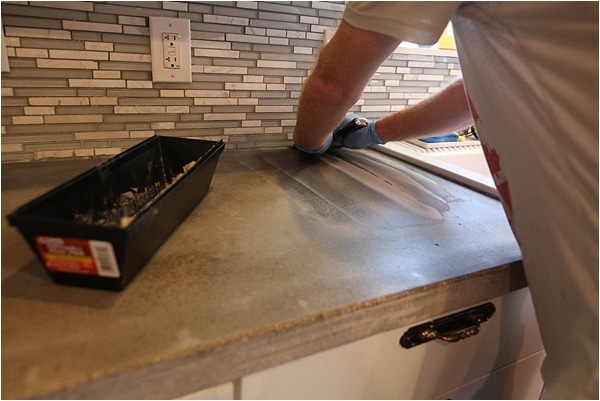
Common Mistakes to Avoid
One common mistake when removing concrete countertops is failing to properly prepare the area. Skipping this step can lead to unnecessary damage to your kitchen and increased cleanup time. Always ensure that the area is protected and all fixtures are disconnected before beginning the removal process.
Another mistake is using excessive force during demolition. While it might be tempting to use brute strength to break up the concrete, doing so can damage the base cabinets and surrounding structures. Working slowly and methodically with the right tools can prevent this issue.
Not wearing proper safety gear is a significant oversight. Removing concrete countertops generates a lot of dust and flying debris, which can be harmful. Always wear safety goggles, gloves, and a dust mask to protect yourself from injuries and health hazards.
Underestimating the weight of concrete is another common mistake. Concrete is extremely heavy, and attempting to lift large pieces on your own can lead to serious injury. Always enlist help when moving heavy debris and use tools like a dolly or wheelbarrow to assist with transportation.
Finally, improperly disposing of concrete debris can cause issues. Not all waste services accept concrete, and illegal dumping can result in fines. Always plan for proper disposal, whether by renting a dumpster for construction debris or finding a local recycling facility that accepts concrete.
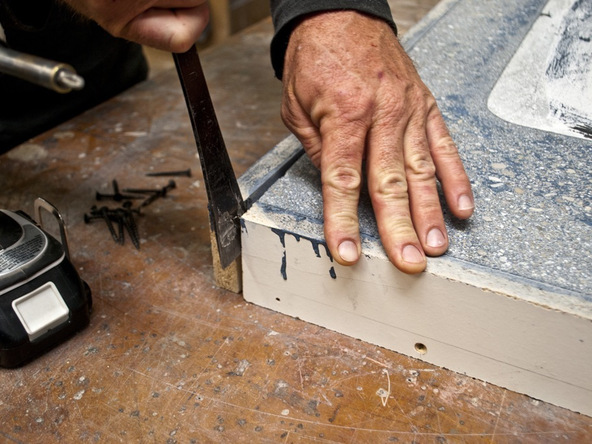
How difficult is it to remove concrete countertops?
Removing concrete countertops is quite challenging due to their weight and the secure manner in which they are installed. The process involves careful preparation, cutting through adhesives, and breaking the concrete into manageable pieces. It requires strength, the right tools, and safety precautions. For those without experience in demolition, hiring a professional can make the process easier and safer.
What tools do I need to remove concrete countertops?
To remove concrete countertops, you will need several tools, including a utility knife, sledgehammer or hammer and chisel, power drill, and safety gear such as goggles, gloves, and a dust mask. For countertops with rebar or mesh reinforcement, an angle grinder might be necessary to cut through the metal. Using a dolly or wheelbarrow can help with transporting the heavy debris.
Can I remove concrete countertops by myself?
While it is possible to remove concrete countertops by yourself, it is a demanding task that requires physical strength, the right tools, and a good understanding of the demolition process. Enlisting help is recommended due to the heavy nature of concrete. If you are not confident in your abilities or lack the necessary tools, hiring a professional can ensure the job is done safely and efficiently.
How do I dispose of concrete countertops after removal?
Disposing of concrete countertops requires planning, as not all waste disposal services accept concrete. Renting a dumpster specifically for construction debris or finding a local recycling facility that accepts concrete are common options. Recycling concrete is an environmentally friendly choice and might be available through local construction waste management services.
What should I do if I encounter rebar or mesh in the concrete countertops?
If you encounter rebar or mesh in your concrete countertops, removing them can be more complex. You will need an angle grinder to cut through the metal reinforcement safely. It’s important to follow all safety guidelines when using power tools and to work carefully to avoid damaging surrounding structures. If you find the process too difficult, consider hiring a professional for assistance.
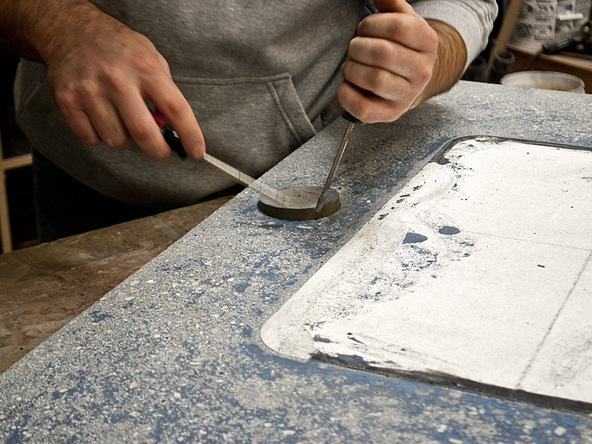
Removing Countertop Stains
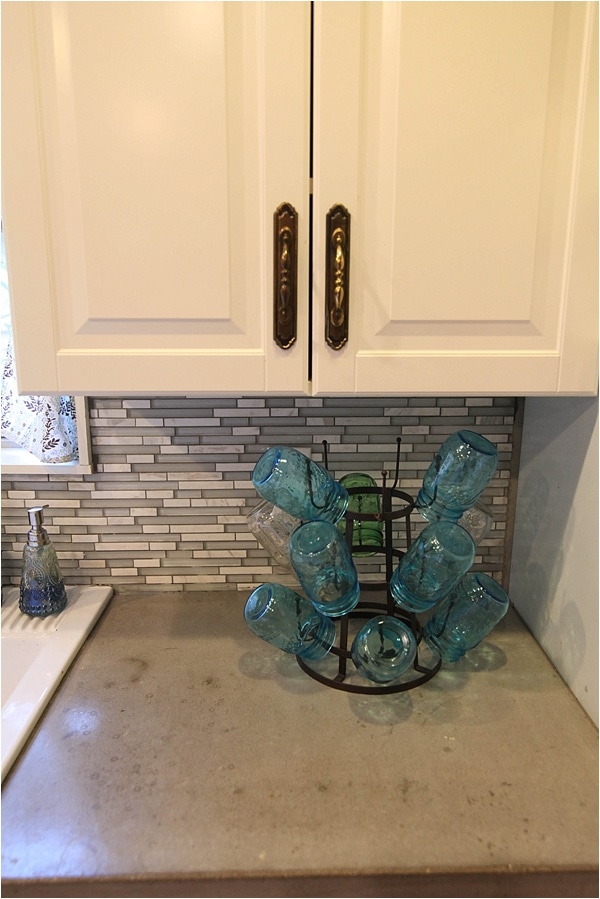
Ways to Clean Concrete Countertops

How to Polish, Seal and Restore a Concrete Countertop

Removing Countertop Stains & Concrete Countertop Sealer
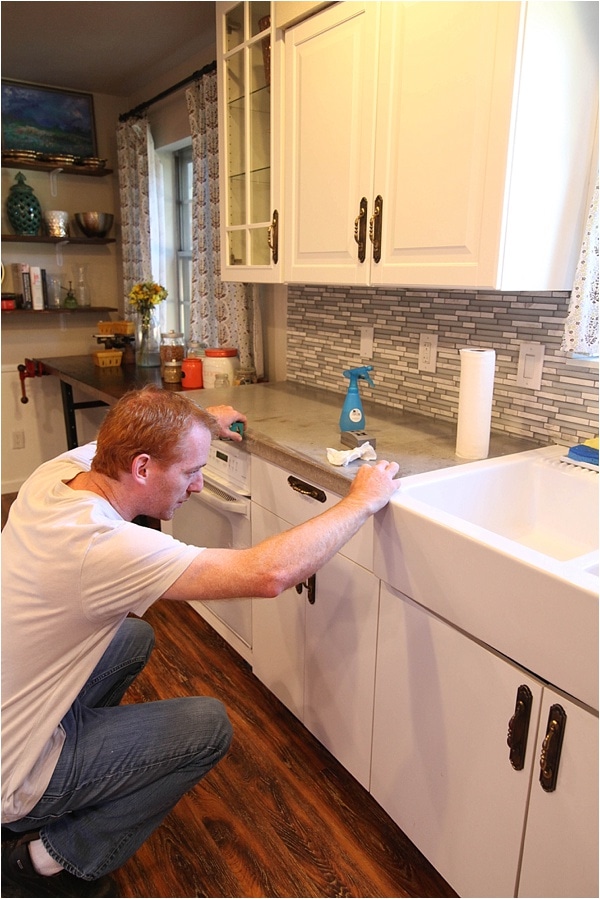
DIY Kitchen Renovation with Concrete Countertops
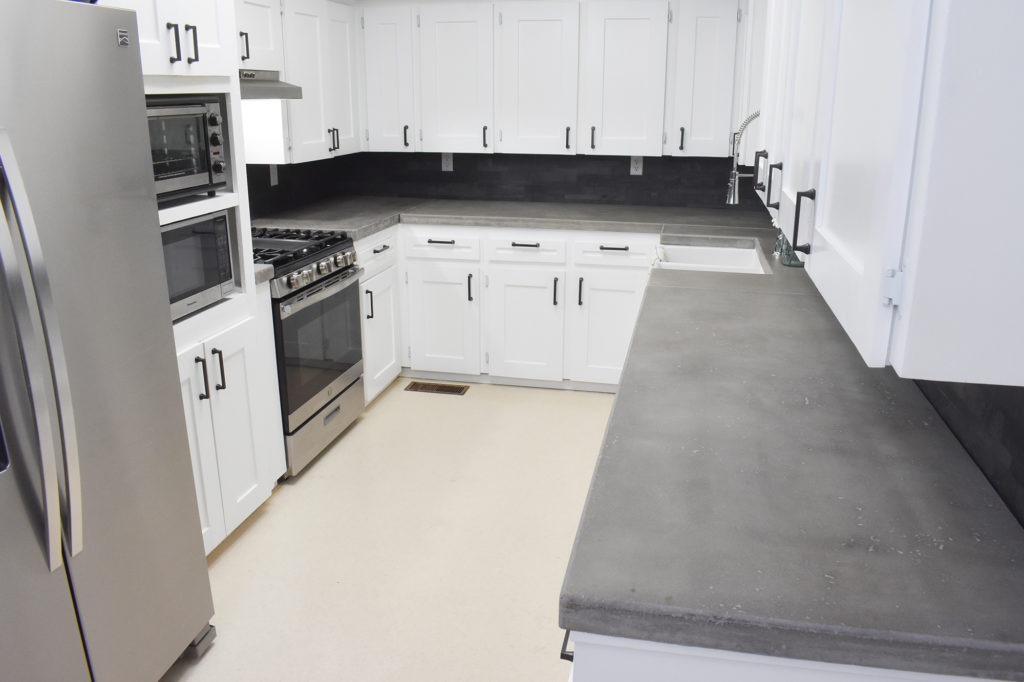
Related articles:
- How To Stain Concrete Countertops
- DIY Concrete Countertop Mix
- Concrete Countertops Made Easy
- Concrete Countertop Overlay
- Black Concrete Countertops
- Marble Look Concrete Countertops
- Light Grey Concrete Countertops
- Concrete Countertop Design Ideas
- Light Colored Concrete Countertops
- Epoxy On Concrete Countertop